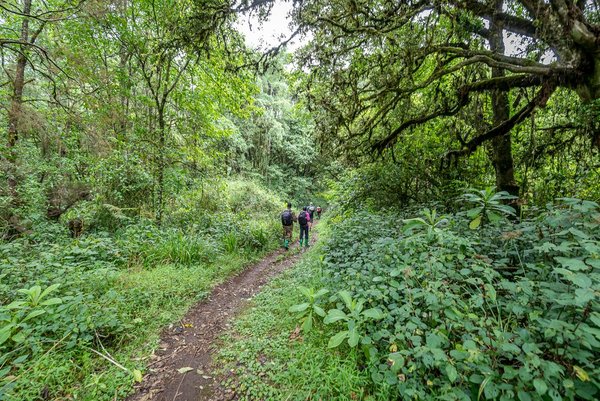 Read this article in French
Read this article in French- Share this article
- Subscribe to our newsletter
Impacts of extreme drought underestimated world-wide
Grasslands and open land cover more than 40 per cent of the Earth’s terrestrial surface. Grasslands are an important carbon dioxide store. This is why researchers from throughout the world have joined forces in an international Drought-Net Experiment (IDE) in order to examine the impacts of increasing dryness caused by climate change on different ecosystems.
Professor Anke Jentsch, who holds the Chair of Disturbance Ecology Studies and Vegetation Dynamics at the University of Bayreuth, Germany, is also involved in the study, which was published in January in Proceedings of the National Academy of Sciences (PNAS).
By reducing precipitation by up to 50 per cent with experimental roof constructions at 100 research locations on six continents, the scientists found out that a single year of drought can reduce vegetation growth by more than 80 per cent. This significantly lowers the ability of ecosystems to absorb carbon dioxide. In all, plant growth in the grassland areas subjected to a drought fell by an average 36 per cent, which is way higher than earlier estimates.
"Unlike the globally observed effects, in around 20 per cent of the locations examined, including a grassland location which was rich in biodiversity in Germany, simulated drought did not have any significant impacts on biomass production,” notes disturbance ecologist Jentsch. The climate of German locations was moister, the number of plant species was higher, and dryness was less pronounced than in the prairie. All in all, meadows rich in biodiversity in the moister zone of Central Europe survived better in drought conditions than those in the dryer climate zones.
Biodiversity promotes resilience to extreme events such as drought
The research results can help ecologists in predicting which ecosystems are most threatened by dry periods and what further-reaching ecological impacts this has. Less plant material can mean less food for grazing animals or poorer harvests. Jentsch points out that during the latest summer drought in Europe, intensively cultivated grassland with relatively few species, such as pure nutrient-poor meadows or planted mixtures of clover and grass seed, were particularly strongly affected.
"By maintaining hay meadows rich in biodiversity or sowing and adding a more diversified mixture of species, such grassland could also continue to support vegetation dynamics in severe drought and render the desired ecosystem services,” she says. "Biodiversity enhances resilience to extreme weather events and more rapid recovery. In changing extreme weather situations, meadows are particularly stable thanks to differences in the functional features of their ‘members’, in other words, herbs and grasses. This is why promoting species diversity in nutrient-poor meadows is an effective protection against harvest losses in the event of droughts.”
The coordination of the International Drought Experiment (IDE) is funded by the US National Science Foundation (NSF). The University of Bayreuth has been involved in the study with Professor Anke Jentsch and her international team since 2013.
(University of Bayreuth/wi)
Reference:
"Extreme drought impacts have been underestimated in grasslands and shrublands globally"; Melinda D. Smith, Kate D. Wilkins, Martin C. Holdrege, and Xiaoan Zuo; The Proceedings of the National Academy of Sciences (PNAS), a peer reviewed journal of the National Academy of Sciences (NAS); January 8th, 2024; 121 (4) e2309881120; DOI: https://doi.org/10.1073/pnas.2309881120
More information:





Add a comment
Be the First to Comment